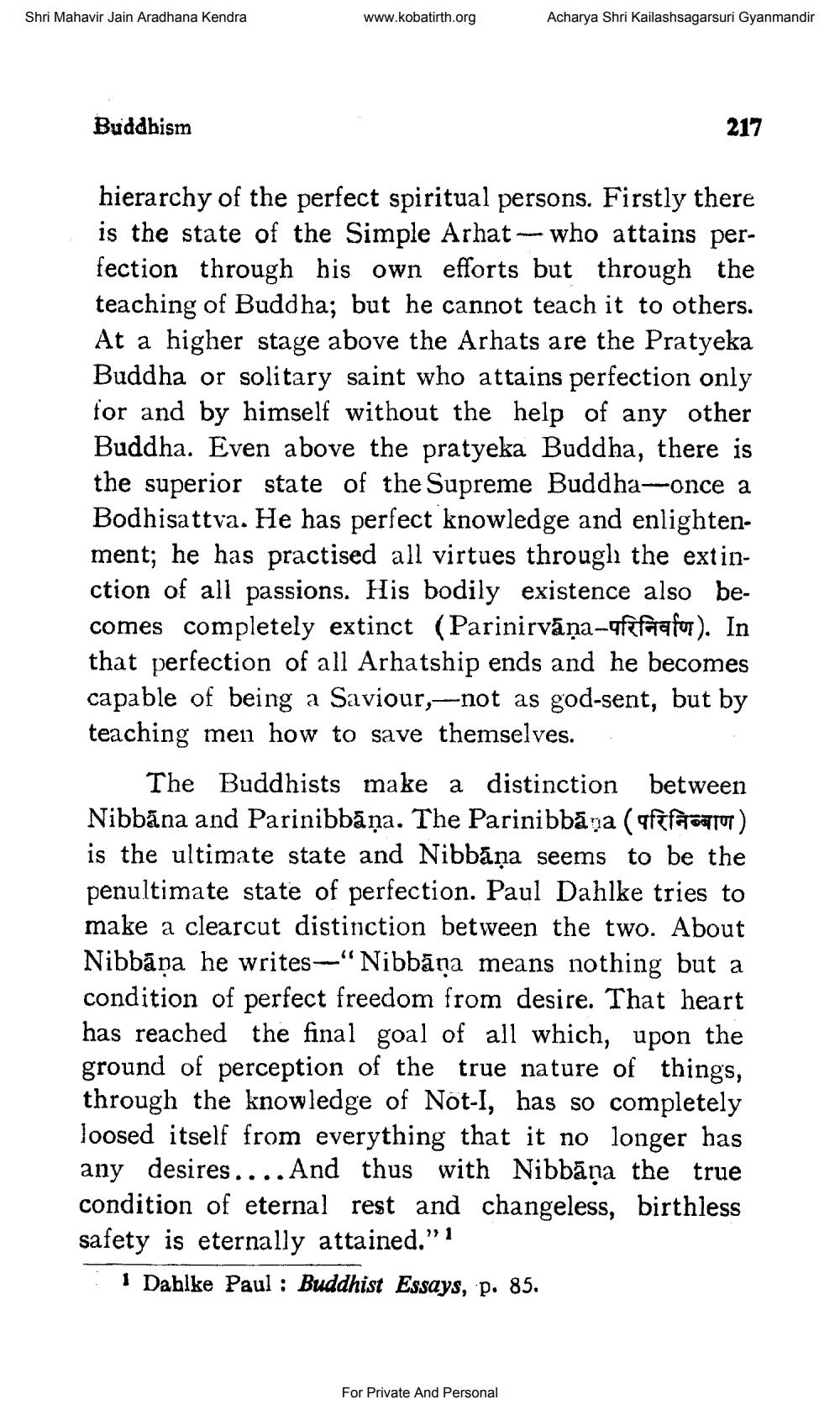________________
Shri Mahavir Jain Aradhana Kendra
www.kobatirth.org
Acharya Shri Kailashsagarsuri Gyanmandir
Buddhism
217
hierarchy of the perfect spiritual persons. Firstly there is the state of the Simple Arhat -- who attains perfection through his own efforts but through the teaching of Buddha; but he cannot teach it to others. At a higher stage above the Arhats are the Pratyeka Buddha or solitary saint who attains perfection only for and by himself without the help of any other Buddha. Even above the pratyeka Buddha, there is the superior state of the Supreme Buddha--once a Bodhisattva. He has perfect knowledge and enlightenment; he has practised all virtues through the extinction of all passions. His bodily existence also becomes completely extinct (Parinirvāņa-affarafor). In that perfection of all Arhatship ends and he becomes capable of being a Saviour,--not as god-sent, but by teaching men how to save themselves.
The Buddhists make a distinction between Nibbāna and Parinibbāņa. The Parinibbana (aftfa salut) is the ultimate state and Nibbāņa seems to be the penultimate state of perfection. Paul Dahlke tries to make a clearcut distinction between the two. About Nibbāna he writes-"Nibbāna means nothing but a condition of perfect freedom from desire. That heart has reached the final goal of all which, upon the ground of perception of the true nature of things, through the knowledge of Not-I, has so completely loosed itself from everything that it no longer has any desires.... And thus with Nibbāņa the true condition of eternal rest and changeless, birthless safety is eternally attained.” 1 : | Dahlke Paul : Buddhist Essays, p. 85.
For Private And Personal




